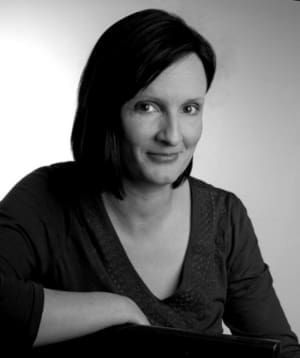In the recent spate of new books that fall into the category loosely called “creative economy” or “cultural policy,” Elizabeth Currid‘s The Warhol Economy: How Fashion, Art, and Music Drive New York City is unique in that it examines specific industries in the unique metropolitan context in which they thrive. Currid’s focus on fashion, contemporary visual arts (including graffiti art), and popular music (particularly rap and hip-hop) makes a good argument for the impacts three industries make on cultural trends around the world. As a New Yorker who is not tuned in to these waves, I felt positively elderly as Currid rattled off names of influential (and unfamiliar, to me) clubs, designers, and DJs. But the book brings to light the extraordinary number of artists working in these industries, and the complex system of relationships that sustains them. The book is a testament to the importance of community in the creation of the art that most affects culture, and the ways in which that community is formed and sustained. This will be of interest to Christians, even those more interested in general cultural trends than in the latest fashion trends.
The creative economy movement, most popularly represented in North America by Richard Florida‘s “Creative Class” series of books and recent bestseller Who’s Your City?, seeks to promote the creative industries as important not only for their value in cultural production, but also for their worth as economic engines for cities. Christians who are interested in culture have been slow to dive into this conversation. This situation should be corrected, since the conversation will be significant to the future of the arts, media, and culture.
Florida announced that because of the new digital workspace, “creatives” can live wherever they choose. They need not necessarily settle in NYC or LA or other arts and cultural industry hubs. Because creatives bring significant financial and human capital with them, he suggests that cities would be wise to cultivate attributes attractive to them. NYC is conspicuously underrepresented in Florida’s seminal The Rise of the Creative Class, as though he can’t quite explain its creative importance, despite its stubborn unwillingness to fit his theories about what these attributes are.
Currid was an undergraduate student of Florida’s, and his imprint is clear in her interests. Currid’s addition to the literature specifically targets NYC, presenting copious data on the economic impact of the arts in NYC, outlining the history of its influence on the arts and culture, summarizing how these industries function socially and commercially, and making recommendations for NYC policymakers (and, by extension, those in other cities) about how to reduce the risk of losing these creatives and their accompanying economic benefits to other markets.
Currid’s primary hypotheses are:
- art and culture matter to economic growth;
- art and culture are at their most efficient when embedded in a rich social life;
- art and culture work best when they achieve demographic density in a particular place; and
- art and culture work as a unified whole.
These are most clearly outlined in the last few pages of the final chapter of the book. Clearly she believes NYC’s dense population and street culture, its vibrant nightlife, and frequent casual contact between designers, musicians, artists and tastemakers make NYC the world hub of creativity in these industries. This final section alone is well worth reading. The previous 180 pages of the book, however, will be of most interest to those with particular interest in fashion, visual arts, and music.
Although the research was originally conducted for Currid’s Ph.D. in urban planning at Columbia University, the book is the chattiest and juiciest dissertation imaginable. Currid herself clearly revels in the nightlife and fashion she writes about, even poking fun at her own weaknesses (admitting to spending a portion of her doctoral fellowship on Manolos). In one “PBS-meets-Sex-and-the-City” moment, she writes: “On an unusually hot Thursday evening in the beginning of May, I was careening down small side streets in SoHo, ready to trip in my four-inch stilettos across a sea of cobblestones as I raced to meet my sister, Sarah, for the Jean-Michel Basquiat retrospective at Deitch Projects.” The book is filled with quotes from major figures in the three industries she studies, and dirt about how they really “work.” The interviewees are a Who’s Who of the hippest people in the hippest industries, and Currid’s own partialities clearly drove her choice of these industries as much as their supporting her theories.
Currid suggests that the principles she applies to fashion, music, and visual arts are typical of all creative industries, but I’m unsure that her primary theory of the importance of nightlife and casual social interaction in business decisions and professional advancement can be applied to all disciplines. In my experience of theatre, parties and other social events are prominent in the milieu of the theatre world, but I’m unconvinced that a significant amount of business is done in those social interactions, or that it is as important to “be seen” in all industries as it is in those she profiles. Currid also doesn’t explain how an emerging artist who is, as she acknowledges, barely able to pay exorbitant NYC rent, is getting appropriately (fashionably) dressed for, getting admission, and paying for $12 martinis at these exclusive nightclubs that are by her account the best (if not only) means of being discovered.
Fashion, music, and art are all based on the solitary, visionary artist, whose work is dependent on and advanced by a web of supporting (but not competing) artists, and an intricate system of unofficial “tastemaker” influence. Other industries that are more inherently collaborative and community-based—such as film, television, theatre, and dance—might function differently. These industries, by coincidence or not, also seem to be more decentralized than fashion, pop music, and visual arts, with major centres of influence outside of NYC. In theatre, for instance, one could argue that London, Chicago, and Seattle are significantly more influential than any cities “competing” with NYC’s preeminence in fashion, as do Paris or Milan, or in popular music, as with LA or Nashville. And, clearly, LA and Hollywood are more influential than NYC in film and TV, although the indie film and web-tv markets are challenging that dominance. Perhaps, in the more solitary creative endeavors, artists must find the community they need to create art wherever it is available, while in the collaborative industries community is an inherent part of the creative process.
This is, finally, the greatest value of The Warhol Economy and other creative economy literature to the Christian who is interested in the arts and culture: the confirmation of what we have known in the church about the importance of community, and the application of it to the broader context of city life and to political economic theory. Public policy observers have recognized the importance of a vibrant and varied network of relationships, and opportunities to come together, in creating culture. That network might be created in a nightclub, on the sidewalk, or even, in a church. The Warhol Economy offers valuable insight into how creative community is created, how it operates, and how a creative community is making products of cultural importance in one of the great cities of creative influence in the world. Even more powerfully, the book will ignite the imagination of Christians about how we could appropriate these observations in the renewing of culture from a Kingdom perspective.
Eric Jacobsen has also reviewed The Warhol Economy for Comment.


